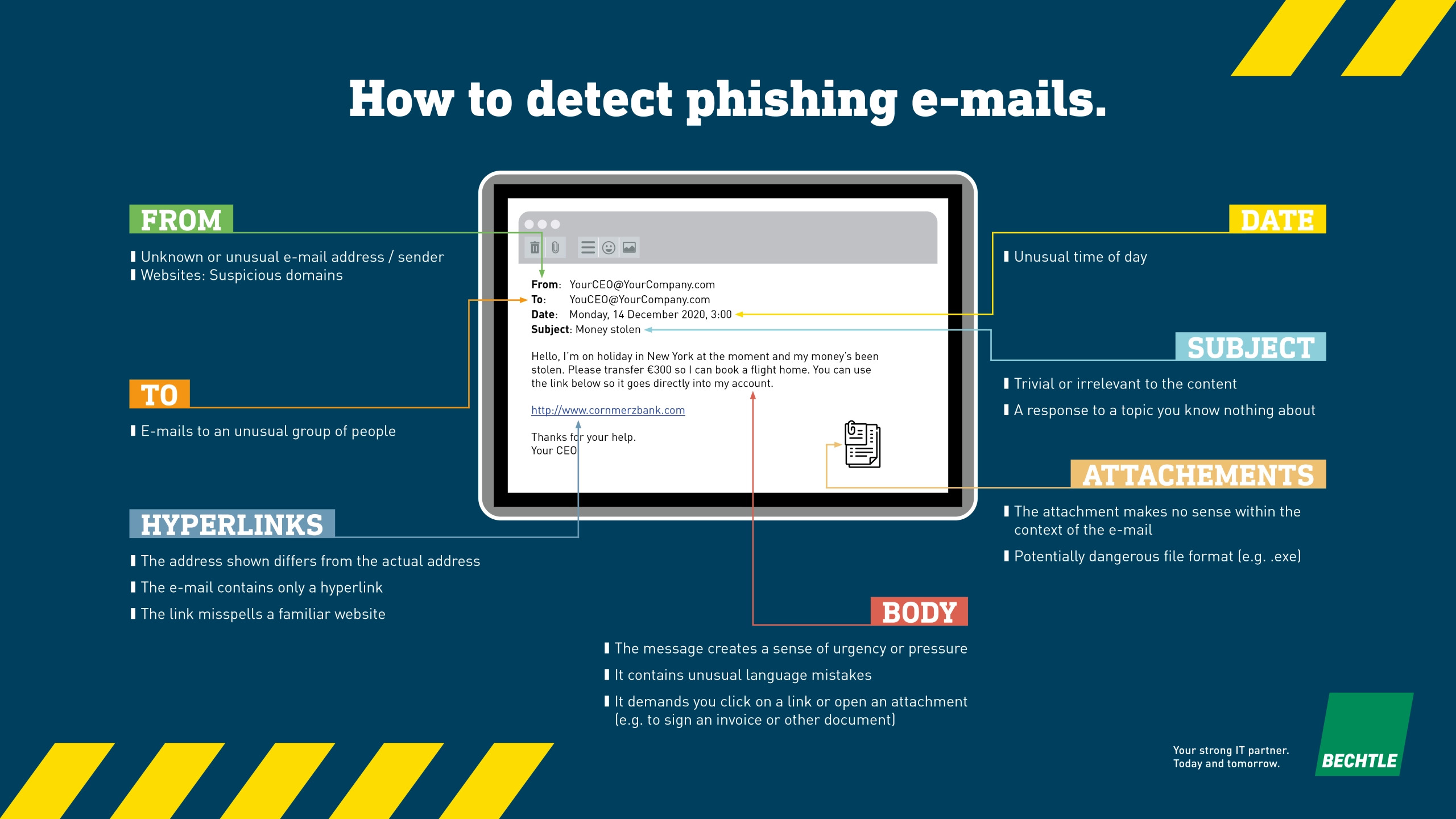Phishing.
Phishing describes an attack in which a false identity is used to try and obtain sensitive information. The most common forms of phishing are fake e-mails, messages and websites attempting to steal access credentials, passwords and other confidential data.
How to spot phishing.
- Keep an eye out for suspicious e-mails – Be on the look out for spelling errors, e-mails coming from unusual addresses and messages that give you pause for thought.
- Check the sender’s address – Impostors often use addresses that are very similar to one belonging to a real company.
- Don’t trust links you don’t know – Never blindly click on a link you’ve received in an e-mail. Carefully check the URL by holding the mouse pointer over it.
- Keep confidential data under wraps – Never enter user names and passwords on unknown or suspicious websites.
- Calls for instant action – View any message you receive that puts you under pressure to act with scepticism. Hackers often use this tactic to trick you into doing something you shouldn’t.

